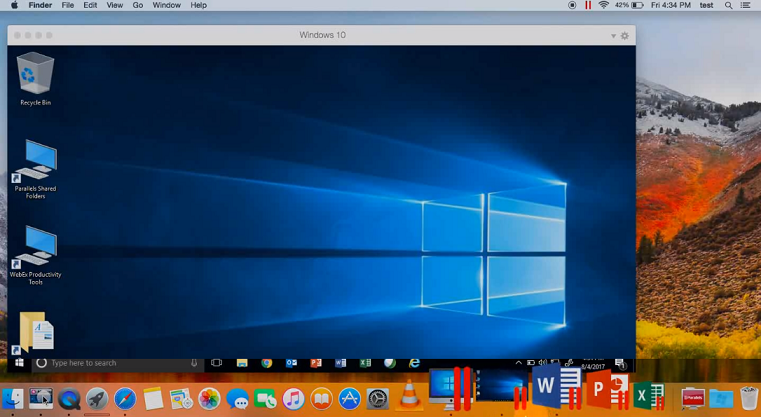Jun 28, 2020 Why Install Ubuntu on Your Mac? There are plenty of reasons for having Ubuntu run on a Mac, including the ability to broaden your technology chops, learn about a different OS, and run one or more OS-specific apps. You may be a Linux developer and realize that the Mac is the best platform to use, or you may simply want to try out Ubuntu.
The MacBook Pro is a popular platform for running Linux. Under the hood, Mac's hardware is remarkably similar to most of the parts used in modern Windows computers. You'll find the same processor families, graphics engines, networking chips, and a great deal more. The tutorial shows you how to set up Parallels for Ubuntu, run Ubuntu for the first time and 'tidy up' the installation (adding drives, sound, etc.). Every step includes a screenshot, so there's.
Ubuntu Linux 14.04 on Parallels Desktop 10, Mac OS X 10.10.2: Parallels and/or Ubuntu update broke Terminal (no command-line prompt) 2 How can you get full resolution in Parallels without Parallels tools? Ubuntu – Something like Parallels Desktop for Linux emulation parallels software-recommendation I'm not normally a fan of mac software implementations, but recently I saw a copy of Parallels Desktop for mac that I was very much impressed.
I'm not normally a fan of mac software implementations, but recently I saw a copy of Parallels Desktop for mac that I was very much impressed by. I looked into parallel's offerings for Linux (I was initially excited that they developed for *nix) but found that it has essentially the same features as VMware.
Does anyone know if there is a software solution for linux that offers the level of integration that the current Parallels Deesktop for mac has? I looked into wine for the programs I want to run and was very frustrated. I feel like all the ratings in their application database were fabricated honesty. I've tried wine once every Ubuntu release since 8.10 and have never gotten it to work stably.
Ubuntu 9.10 alpha has been around for some time now, and final version will be released later this year. This tutorial will guide you in installing Ubuntu 9.10 (Karmic Koala) alpha using Parallels Desktop 4.0 on Mac OS X. I’m using build 4.0.3522 of Parallels Desktop. When the final version is released, this will be updated to reflect any changes in install.
Download Ubuntu 9.10 Karmic Koala
To get started, download the appropriate version of Ubuntu from the links below:
- Intel x86 installer (choose this unless you want 64 bit Ubuntu)
- 64 bit installer (choose this only if you have a Intel Core 2 or AMD64 processor)
Install Ubuntu Karmic Koala (9.10) on Parallels Desktop (Mac OS X)
Some general instructions before getting started: hit left/right arrow to move from one option to another. Where arrows don’t work, use Tab.
Open Parallels Desktop and click File > New Virtual Machine.
Choose CD/DVD image and point to the ISO file you downloaded.
Name it Ubuntu 9.10 (include the version number so as to identify it easily).
Upon clicking “Start”, the installation will begin.
Choose your language and hit Enter.
“Install Ubuntu” will be selected by default, hit enter again.
English will be selected as the language, hit Enter again.
Choose your country and hit enter.
For keyboard layout, choose No (by using left/right arrow) and hit enter.

If you use a standard keyboard, choose USA under “Origin of keyboard”.
Choose USA again – unless you have a non-standard layout.
The installer will proceed, with a progress bar.
If you are on a home network, enter any name, I choose Ubuntu. Hit enter.
Select the region and city, to configure the clock.
For partition, choose “Guided – entire disk”, which will be the default option. Hit enter.
Ensure that the disk chosen has the words “Virtual HDD” in it.
Confirm partitioning by choosing “No” and hitting enter.
Enter your name, hit tab and then hit enter.
Enter your username (remember it, this is the login username), hit tab and then hit enter.
Enter password and hit enter, and renter your password for confirmation.
Encryption is not really important for a Parallels install, so choose No (by hitting Tab) and hit enter.
Unless you use a proxy, hit tab (to navigate to “Continue”) and hit enter.
Depending on whether your clock is set to UTC, choose the option and hit enter.
You will be asked to eject Ubuntu disk. Since we have used a .iso file, Ubuntu considers it as the real drive. To set up the real CD/DVD drive, hit Control+Alt to come out of Parallels, then click Devices, point to CD/DVD ROM 1 > Real CD/DVD ROM > (whichever real optical drive you have).
click to enlarge
Since we have used a .iso file, you do not have to eject anything. Hit tab to get to “Continue” and hit enter.

Ubuntu will reboot.
Let it complete the reboot and reach the login screen.
Enter your username and password to log in.
Here’s the Ubuntu desktop, booted for the first time.
It is a good idea to update all software (and do so every week or so) – the advantage of Linux is the frequent security updates and patches. To update, click System > Administration > Update Manager.
Hit Check to refresh updates. Then, enter your password and hit OK.
If Update Manager shows any new updates, check them and hit “Install Updates”.
Gnu Parallel Ubuntu
Parallels Tools will be available for Ubuntu 9.10 soon after the final release, so we will update this tutorial when it is available.
